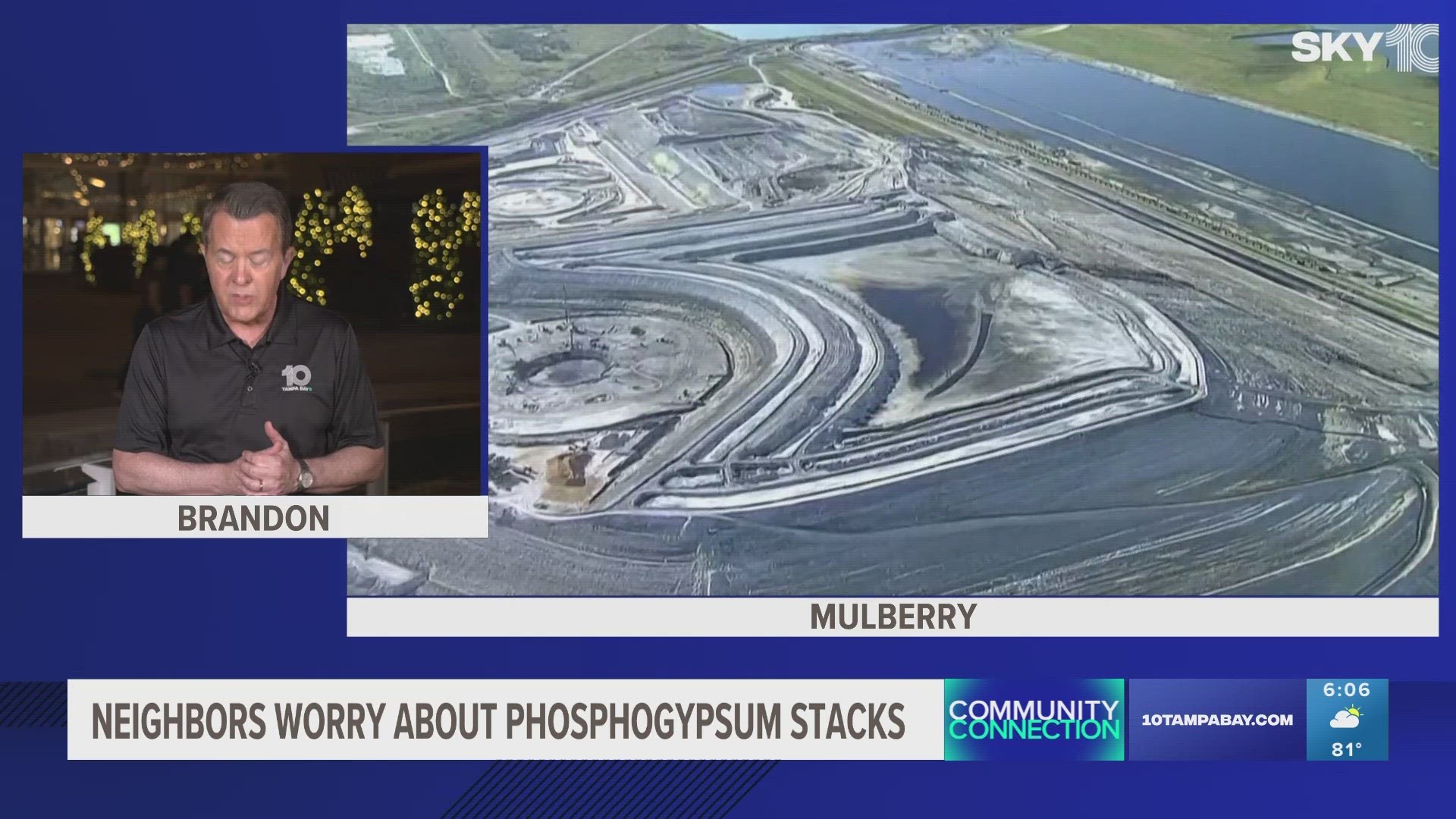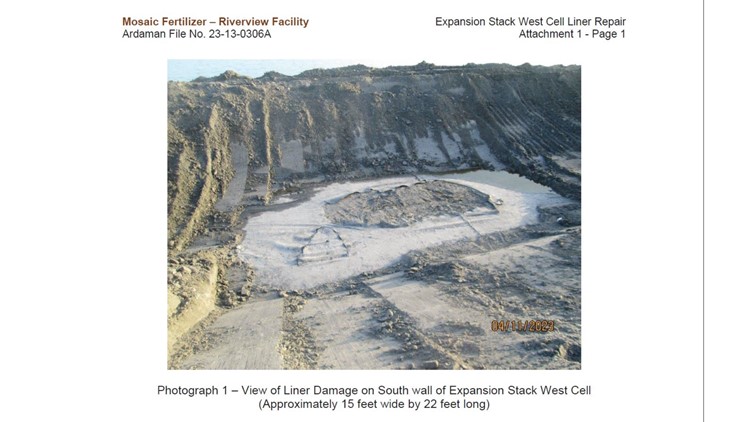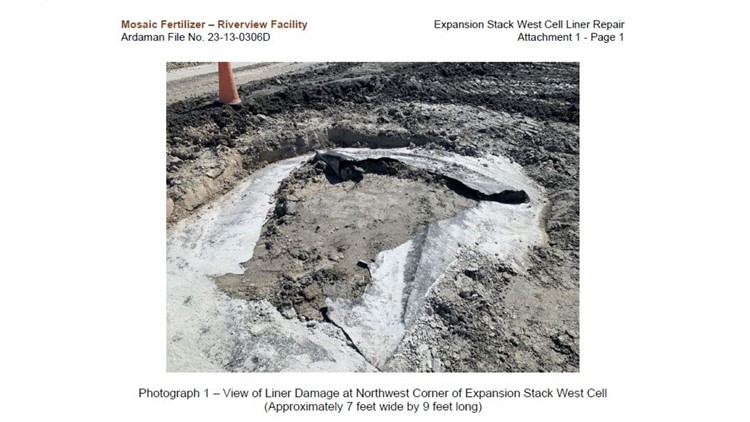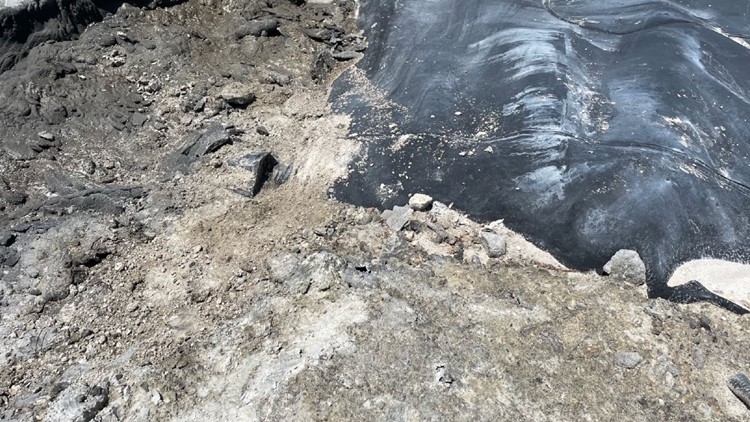RIVERVIEW, Fla. — It’s been nearly 20 years since a fertilizer facility in Riverview spilled millions of gallons of sludgy wastewater – killing wildlife and hurting the environment.
So, is there an environmental threat to that community now?
10 Investigates combed through the latest data and documents to find out.
We found EPA data that shows the Riverview facility has had “significant violations” within the past few years. Some neighbors worry about what it could mean for their health.
“I was born and raised here. My parents were one of the first families that moved in here in 1960,” Twanda Bradley said.
She has deep roots in Progress Village and is now president of the Progress Village Civic Council.
Living in the historically Black community means being neighbors with the Riverview fertilizer facility and the phosphogypsum stacks that come with it.
“It’s uncomfortable,” Bradley said. “We don’t know if it has or is impacting our health.”


What is a phosphogypsum stack?
Phosphogypsum is a waste product from manufacturing fertilizer for food production.
It’s stored in massive piles, called stacks.
In Riverview, the east gypstack, which is closest to Progress Village, is the active one.
The west stack, which is closer to the waterway, is inactive. That means phosphogypsum is not being stacked there anymore, but some process water is still stored on top.

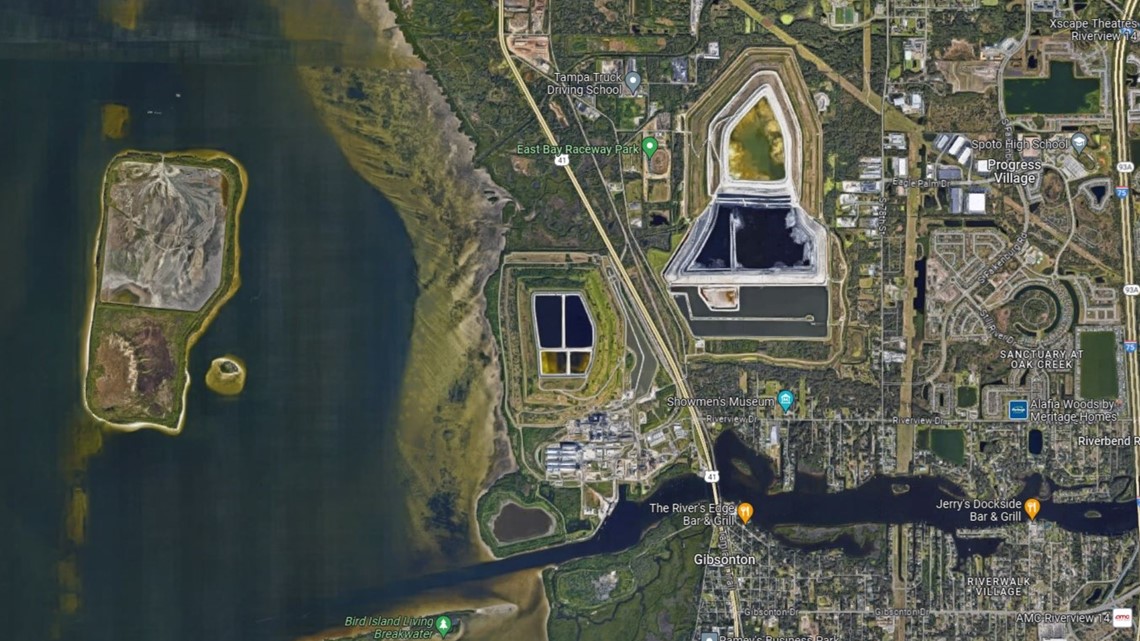
University of South Florida Professor of Geoscience Dr. Matthew Pasek tells 10 Investigates the biggest risks to health and safety come when gypstacks are not closely monitored.
“If leaks happen, then the groundwater or water that people drink may be contaminated. If gypsum starts blowing around, it might be inhaled as part of dust,” Pasek said.
In February 2021, environmental organizations across the country petitioned the EPA to improve federal oversight of waste produced by phosphogypsum facilities.
The EPA denied their request.
Past gypstack problems
Phosphogypsum stacks were big news in March 2021, when a tear in a reservoir liner at the Piney Point gypstack caused panic over a potential collapse.
To prevent a crisis, crews discharged more than 200 million gallons of untreated wastewater into Tampa Bay.
Late last month, Mosaic reported a possible tear in its gypsum stack liner at its New Wales facility in Polk County, sparking concerns that contaminated water could pollute the environment.
The Florida Department of Environmental Protection tells 10 Investigates that the investigations at the New Wales facility are ongoing but, so far, there’s no data indicating a breach of the walls and no discharges to surface water.
In 2004, heavy rain from Hurricane Frances caused a rupture in a reservoir at the Riverview facility, then owned by Cargill Fertilizer.
Millions of gallons of sludgy, acidic wastewater emptied into Archie Creek Canal, Hillsborough Bay, and surrounding wetlands.
According to the NOAA Damage Assessment, Remediation, and Restoration Program, the spill killed thousands of fish, crabs, and other aquatic wildlife. It also harmed wetland habitats and seagrass beds.
Since then, the facility has changed hands to Mosaic.
The company’s Public Affairs Manager Jackie Barron said Mosaic made changes to prevent disaster during another hurricane.
“Now our gypstacks have what’s called a double dike system – so, a secondary containment system, to better control storm surge and protect against erosion,” Barron said. “None of our gypstacks have had any issues during hurricanes in the past nearly two decades.”
2023: Liner repairs and environmental justice concerns
10 Investigates reviewed Florida Department of Environmental Protection reports and found that Mosaic has reported at least four liner repairs at the Riverview facility so far this year.
Mosaic Fertilizer 2023 liner repair reports with Florid DEP
“We didn’t know that there were some liner concerns. We didn’t know,” Bradley said.
We asked Barron if Mosaic communicated about this year’s liner tears to the surrounding neighborhoods.
“Those particular liner tears were not at the base of the stack. They were at the upper sections of the stack. And that’s above the water table. And there were no off-site environmental impacts. If there were a situation where we had an environmental impact… we would also do outreach to the community,” Barron said.
Barron says Mosaic participates in regular Riverview Community Advisory Panel meetings to keep the community informed.
According to the Environmental Protection Agency’s analysis, the area surrounding the Riverview facility has characteristics toward the highest end of environmental justice concerns that the EPA monitors — including ozone, air toxins cancer risk, and toxic releases to air.
“They should not be worried about their health. We are constantly monitoring and measuring,” Barron said.
EPA data shows the facility has had “significant violations” within the past few years. The feds also report Mosaic has been fined nearly $69,000 in penalties from Formal Enforcement Actions related to Riverview in the past five years.
Barron says those violations tend to be growing pains as Mosaic adjusts to new regulations.
“Any violation is one more than we want. We take any violation seriously,” she said. “It’s a constant state of improvement. And as you work through that, it may come with some violations that we will work to address.”
EPA data also shows that the amount of water pollutants Mosaic reported releasing at the Riverview facility has gone down every year since 2019.

